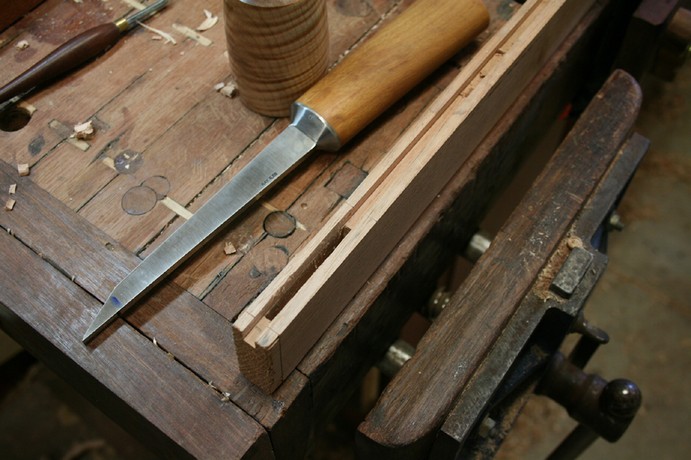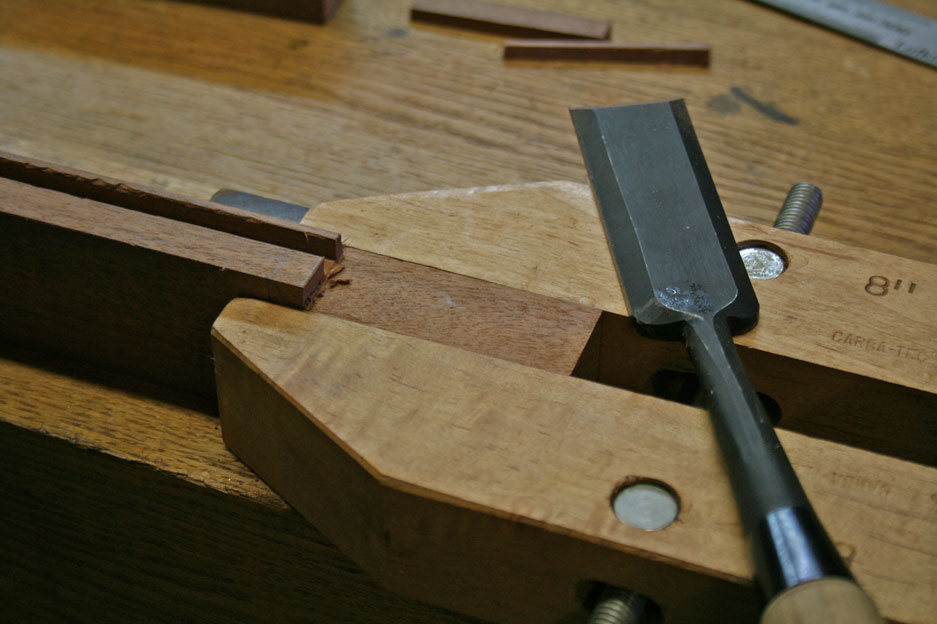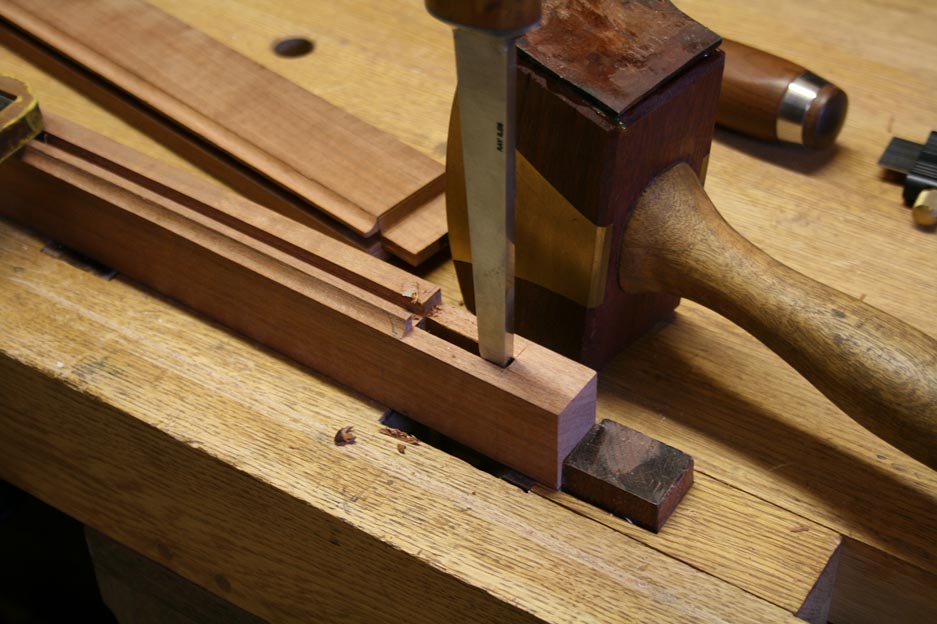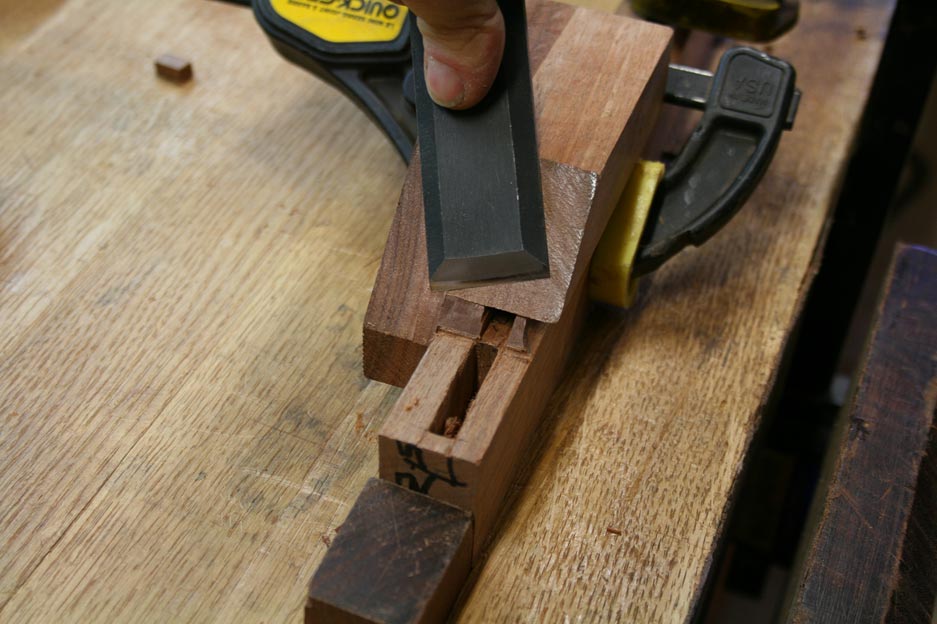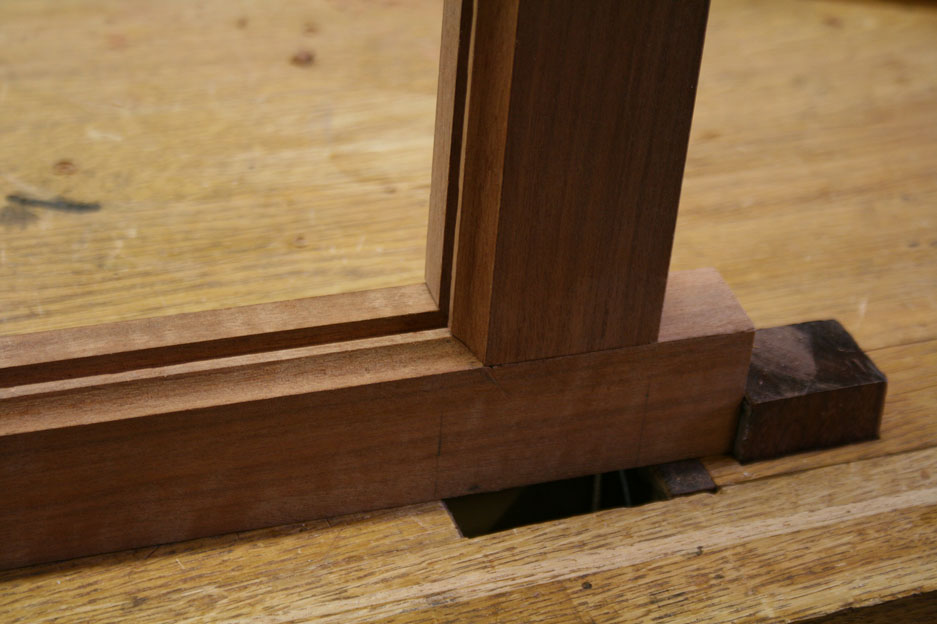Good Morning All,
I intend shortly to make the lid for my version of the Anarchist's Tool Chest. It consists of a frame holding a central panel. The inside of the frame has a 3/8" groove to receive the panel and the frame members are connected to each other with through mortises.
The question is: should one cut the M&Ts first and then do the groove or do the groove first and use it as a starting guide for cutting the mortises? My initial thought is that the latter is the obvious approach but in his book Christopher Schwarz seems to recommend the opposite sequence. What do you reckon?
Thanks in advance.
Andy.
I intend shortly to make the lid for my version of the Anarchist's Tool Chest. It consists of a frame holding a central panel. The inside of the frame has a 3/8" groove to receive the panel and the frame members are connected to each other with through mortises.
The question is: should one cut the M&Ts first and then do the groove or do the groove first and use it as a starting guide for cutting the mortises? My initial thought is that the latter is the obvious approach but in his book Christopher Schwarz seems to recommend the opposite sequence. What do you reckon?
Thanks in advance.
Andy.





